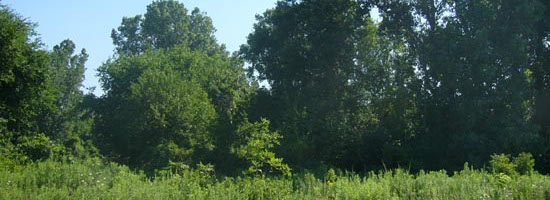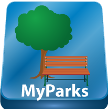Black Oak Heritage Park

599 Broadway Street
Black Oak Heritage Park supports one of the finest stands of black oak in Southwestern Ontario and is home to such nesting birds as Scarlet Tanager, Rose-breasted Grosbeak, Eastern Bluebird and Cooper's Hawk. Many of the native plants at Black Oak Heritage Park are extremely rare elsewhere in Canada. Black Oak Park is part of the Ojibway Prairie Complex, which also includes Ojibway Park, Tallgrass Prairie Heritage Park, Spring Garden Natural Area and Ojibway Prairie Provinical Nature Reserve.
Black Oak Heritage Park - Frequently Asked Questions
What is Black Oak Heritage Park?
Black Oak Heritage Park (BOHP) - an ecological gem in the City of Windsor - is a natural area of land, and public park area that is part of the Ojibway Prairie Complex in the City of Windsor. The area also includes Ojibway Park, Tallgrass Prairie Heritage Park, Spring Garden Natural Area and Ojibway Prairie Provincial Nature Reserve.
What is unique about Black Oak Heritage Park, and why is it special to Windsor?
What is unique about the Ontario Prairie Complex, and why is it special to Windsor?
The most striking aspect of Ojibway Prairie Complex is the tremendous variety of its vegetation and animal life. Wetlands, forest, savanna and prairie provide habitat for a great number of rare plants, insects, reptiles, birds and mammals – including those listed above. The prairie landscape, characterized by a lack of trees (less than 2.5 trees / hectare) includes grasses and flowers that grow very tall and lush; hence the name – tallgrass prairie.
Essex County, in extreme southern Ontario, has less than 6% natural forest cover. It is estimated that less than 0.5% of the original prairies and savanna remain in all of Southwestern Ontario today. The largest relicts which survived were those on lands controlled by native aboriginal peoples, such as Walpole Island, and those wedged between the developed urban portions of Windsor and LaSalle - the Ojibway Prairie Complex.
What is the history of Black Oak Heritage Park?
What is the size of Black Oak Heritage Park, and the surrounding area?
Who oversees Black Oak Heritage Park?
What amenities does Black Oak Heritage Park offer?
BOHP is a gem of eco-tourism, and a beautiful place to escape the hustle and bustle of city life to spend some time in the solitude of a natural area. BOHP amenities include:
-
Two kilometres of marked trails with opportunities for passive recreational activities such as hiking, bird-watching, photography and leisure cycling.
-
Adjacent dog park.
How do I access Black Oak Heritage Park?
Are there useable Trails available at Black Oak Heritage Park for public enjoyment?
Yes. There is one designated, accessible public trail in the north section of BOHP. The trail is two kilometres long, marked by helpful wayfinding and interpretive signage, and offers opportunities for passive recreational activities such as hiking, bird-watching, photography and leisure cycling.
A second trail onsite is not accessible and not open to the public.
Why is the second trail closed to the public?
The south section of BOHP, and the trail that runs through it, is not available for public use. Any trails present there must be avoided. Use of such trails would be in violation of the City of Windsor’s Parks By-law (200-2002), which is in place to protect and preserve environmentally sensitive areas. Human interaction with such protected areas would jeopardize numerous rare and endangered species in the area. BOHP contains sensitive habitats, and is a natural community gem. As such, its protection and preservation is vital to maintain the land and the species that make their home there. These lands are protected in our community because something rare and important exists within them. The City of Windsor works to provide a balance between public access to appreciate and enjoy such lands, while protecting the area so that future generations can access them as well.
What type of uses/activities does Black Oak Heritage Park accept/support?
The designated trail at BOHP is reserved for passive recreational activities only, such as hiking, bird watching, photography and leisure cycling.
What type of uses/activities are prohibited in Black Oak Heritage Park?
In order to protect and preserve BOHP and the numerous sensitive species and plant life that exist within it, the following uses / activities are prohibited in the park:
-
Motorized vehicles, including e-bikes.
-
Exploration / utilization of the trails on the south section of the park.
-
Exploration / utilization of the property owned by the Windsor Port Authority along the park’s western boundary.
-
Any alteration to the physical land (i.e. digging or creating trails, building structures, etc.).
-
Removing any items from the park (i.e. leaves, sticks, stones, dirty, plants, etc.); while tempting to take home a keepsake, everything found in BOHP has a purpose – we encourage you to leave everything behind for someone else to enjoy, and take pictures and memories away after your visit.
What can I do if I see someone abusing Black Oak Heritage Park?
Black Oak Heritage Park was closed from December 2015 to April 2018; what was the cause of this closure?
BOHP closed to the public in 2015 to accommodate construction and development of the Herb Gray Parkway. The project required the closure of the parking lot entrance at Broadway Boulevard, which provides the only access point to the park. As a result, public access to the area was not possible during the project phase. Now that access to Broadway Boulevard has been re-established, visitors are once again able to enter and enjoy BOHP from dawn to dusk.
Will Black Oak Heritage Park be closed to the public again at any point in the future?
Construction and development of the site of the Canadian Port of Entry for the Gordie Howe International Bridge, adjacent to BOHP, is now underway. As this latest project progresses, temporary closures for Broadway Boulevard and BOHP may occur from time to time. During these times, access to the park may be affected. All members of the public are required to keep out of the construction site during such times - for preservation of the land and for personal safety. Unauthorized entries during such times will be considered trespassing. Visit www.wdbridge.com for information on road closures, and www.citywindsor.ca for information on closures that may impact access to BOHP.
Why is it important to keep out of areas that are regenerating or closed to the public?
Many plants, animals, birds and insects - especially rare ones – can be displaced by human disturbance. Regeneration of a natural area is critical to the proper assessment of its habitats and species.
What is the future plan for the preservation/engagement of Black Oak Heritage Park?
The City of Windsor’s Parks Master Plan – Rediscover our Parks – lays out a 20-year vision (2015 to 2035) for the design and development of city park areas, including BOHP. The Parks Plan sets forth a Vision “to provide a robust parks and recreation experience for all to enjoy”, and a Mission “to sustainably develop and maintain parkland and recreational activities with our natural and cultural resources; foster economic growth within the city, while cultivating a quality of life for diverse, healthy, active and liveable neighbourhoods.”
BOHP is a key natural area included in the Parks Master Plan, with future plans for management of the land being looked at through a lens of accessibility and inclusivity, communication and partnership, healthy and wellness, sustainability, park diversity, connectivity, safety, efficiency and experiential tourism. Work in this area is slated to begin in 2018.
What is a Natural Area Management Plan, and how long does it take to complete?
A natural area management plan outlines features, uses, data, mapping, species at risk, invasive species, rare habitats, significant functions, and other important properties of a natural area. It also provides an analysis of surveys, mapping and uses of the natural area, along with recommendations for management, mitigation, and protection.
A natural area management plan provides the background information needed to make sound scientifically based management recommendations. It is developed by a qualified specialist, biologist, or ecologist with experience in the natural area and its featured habitats, functions and species. Depending on the complexity and size of the natural area, a management plan can take from one to several years to complete.
Additional Resources and Information:
- YouTube Video on BOHP
- Official Website for Ojibway Nature Centre
- Official Webpage for BOHP
- City of Windsor Parks & Forestry Web Section
- City of Windsor MappMyCity Parks Finder
- City of Windsor Parks By-law 200-2002

